
Just Gimme Some Truth
John Morris’s assurances, reiterated countless times over seven decades, that the emulsion on Robert Capa’s D-Day negatives melted after “just a few minutes” in an improvised, overheated, closed film-drying cabinet in LIFE‘s London darkroom on June 7, 1944 constitutes, to some extent, a verifiable or impeachable statement. So I decided to put it to the test, as best I could. My conclusion: This never happened.
For those unfamiliar with darkroom practice, a film-drying cabinet has one main purpose: Protecting wet film from dust and other airborne debris, as well as fingerprints and other damage from handling or accidental contact, while its gelatin-based emulsion is still soft, moist and adhesive after processing. For that reason, film cabinets have vents, to increase air circulation; air filters, to eliminate as much dust as possible; and doors, for restricting access.
Thus it’s standard practice to shut the doors of a film-drying cabinet; indeed, it’s normal to keep them closed except when inserting wet films and removing dry ones. It’s habitual amongst darkroom techs everywhere to do so. Purposely leaving them open in a bustling multi-user darkroom such as LIFE‘s UK facility would be unusual, and risky, since any passing party with basic darkroom training would tend to close them without thinking twice.
Professional-quality film-drying cabinets typically have some combination of exhaust fan and vents, to remove moisture while increasing air circulation, together with a thermostatically controlled heating system, to warm the incoming air. Both of these speed the drying of films. Morris describes LIFE‘s London darkroom as relying instead on an inexplicably makeshift arrangement involving a wooden clothes locker with its doors kept open and a “heating coil.”
If he’s telling the truth about this, Morris’s highly unprofessional decision to approve the use of a film-drying arrangement that would leave the films vulnerable to dust and damage when running the jury-rigged heater surely proved a foolish economy.
Back Bearings
A few pertinent facts:
- London experienced cool, windy, and damp weather that week, with highs of 15.6°C/60°F. Let’s assume that, between the building’s heat system and the human activity in the darkroom, room temperature in the LIFE darkroom ran about 70°F that evening.
- Let’s also assume that this “wooden clothes locker” they’d repurposed had the approximate proportions of a standard commercial film-drying cabinet — say, 6 feet high by 3 feet wide by 18 inches deep (27 cubic feet), sufficient to hold three dozen or more filmstrips at once.
- The heat from a unit placed at the bottom of a cabinet would of course rise, and — absent a circulating fan, which the LIFE cabinet lacked — would accumulate most intensely at the top of the cabinet over time.
-
The film Capa used, as indicated on its edges, was Ciné-Kodak Super-X Panchromatic Safety Film, rated at 50 ASA. (The designation “safety” meant that its backing was cellulose diacetate, much less flammable than its predecessor, nitrate.) As its name implies, this was intended primarily for use in movie cameras; you’ll find it indicated for that purpose in this PDF of a 1940 Kodak movie-camera manual.
- By 1938, however, Kodak had ceased manufacturing Super-X, replacing it with Plus-X. Capa may have appreciated its fine-grain aspect. He may also have purchased 50-foot or 100-foot lengths of this discontinued but still dependable stock at bargain prices, bulk-loading his cassettes himself.
- Since the surviving exposures were made while Capa was still aboard the landing craft that brought him to the battlefield, then while he made his way to shore, and then from the shore looking seaward, we can reasonably assume that they came at the beginning of a roll, though Capa indicates that the last of them came at the end of a roll. One way or another, they would have hung at either the top or the bottom of the cabinet when put there to dry after development.
- The question, then: Starting from a room temperature of 70F, how long would it take for a “heating coil” to heat the air in a closed wooden locker to 130F, and how long would that temperature have to be sustained to melt the emulsion off strips of gelatin-silver film?
-
Of course, the vague term “heating coil” may confuse matters, as it usually describes a small electrical device used for bringing a cup of water to a boil for instant coffee or tea. This seems an unlikely device to repurpose for the drying of film, since most models will shut off if not immersed in water, and you wouldn’t boil water under film you’re trying to dry. Possibly they used a hot plate or space heater turned on low, though Morris surely knows the difference between a heating coil and either of those alternatives; moreover, the latter seem like risky devices to use in close proximity to acetate-based films in a wooden cabinet, even when open.
-
[Note, July 21, 2015: Most film-drying cabinets don’t use anything that involves high heat; you really just need enough heat at the bottom that the hot air will rise and suck in cooler air, so that there’s a bit of circulation. Normally I just turn on the 25-watt bulb at the bottom of mine. Anything that could get very hot very quickly would risk blowing a fuse or starting a fire. Conceivably, in LIFE‘s darkroom, it was something as simple as this — a low-voltage electric coil that would screw into a standard light socket and give off a bit of heat. This, and other such elements, were used in hatcheries for chicks and insects. Since you didn’t want to cook your eggs and larvae, but just keep them warm, the heat they provided was minimal — certainly not enough to damage film in “a few minutes.” — A. D. C.]
-
Even if they had either a hot plate or a space heater running on high in that wooden locker, I can’t imagine how its internal temperature would have reached emulsion-melting levels in “just a few minutes.” Given the urgency of the situation, with Morris’s “rush rush rush” demand for contact prints, the films can’t have stayed in that locker for more than 10 minutes before Banks or another darkroom staffer returned to check on and retrieve them.
- According to Morris (in his memoir Get the Picture), “The darkroom staff — all five of them — had been standing by idly since Tuesday morning [June 6], their anxiety about the pressure they would be under growing steadily by the hour. This nervousness would soon result in an epic blunder.” With a major deadline just hours away, Capa’s films, developed and fixed and washed by one or more of this cluster of lab techs, would have flown through the darkroom and into the film-drying cabinet.
-
According to Richard Whelan, “John Morris … was waiting in his office when the films finally arrived, and Hans Wild and Dennis Sanders [sic] were standing by in the lab. … When the negatives came out of the developing solution, Wild told Morris that they were fabulous.” This suggests that Wild did the developing, or else that Sanders/Banks did so under his direct supervision, with Wild performing a spot inspection of the end of at least one roll before it went into the fixing bath.
- How then, with Wild and Sanders/Banks on the spot and three other staffers present, all there for the sole purpose of looking after Capa’s history-making efforts, could Capa’s four little rolls of film, all by themselves, have sat unattended in the drying cabinet with its doors closed long enough to melt their emulsions? The more I think about it, the more implausible Morris’s narrative becomes.
The High-Temp Drying Cabinet Test
The premise of John Morris’s account of the accidental destruction of Capa’s films, of course, is that gelatin-silver emulsion melts at high temperature in an enclosed space in “just a few minutes.” This is demonstrably false.
As it happens, I have a darkroom in my basement that has gone unused for many years, and it includes a wooden film-drying cabinet: 75″ high, 29″ wide, 15″ deep, or 18.8 cubic feet. So I ran an experiment.
Not having either an immersion heating coil or a hot plate handy, I substituted a compact 6×7-1/2″ Tatung Heat Devil II, a portable ceramic space heater that puts out 5200 BTU and reaches its set temperature within a minute. I suspect this heats up much faster, and puts out more heat, more efficiently, than whatever “heating coil” they supposedly used in London in 1944. I hung a newly soaked strip of previously developed and fixed Tri-X film from 1993 at the top of the cabinet.
I started with a room temperature in the cabinet of 80°F (10 degrees higher than my estimate of room temperature in London on that day), and the Tatung set on medium.
- It took 5 minutes to reach 120°F degrees at the top of the cabinet, with its doors closed and its vent blocked (measured with a darkroom thermometer).
- After 10 minutes, air temperature at the top of the cabinet hit 135°F and stayed there.
- As the emulsion gave no sign of melting or other distress after 10 minutes at 135°F, I increased the heat, turning the dial to high. The temperature eventually reached 150°F.
- That’s almost certainly hotter than the interior of LIFE‘s homemade drying cabinet in 1944.
- The Tatung has a safety feature: an internal thermostat that turns it off to prevent overheating. This kicked in when the temperature in the cabinet stayed at 150°F for 5 minutes, 40 minutes into the test.
- After 40 minutes of heat, including 25 minutes at over 135°F and 20 minutes at over 145°F, and 10 minutes at 150°F, my film was intact.
- I left the film there for an additional hour while I ran an errand. When I returned, the temperature inside the cabinet had come back down to 90°F. The film was still intact. (See the scan at right.)
I admit this doesn’t qualify as scientific. Tri-X in 1993 isn’t identical to Super-X in 1944. I’ve no specifics on the size of the “wooden clothes locker” LIFE used (though I doubt it was smaller than my cabinet). I’ve no idea what kind of “heating coil” they had in it (though I doubt it was more powerful and faster heating than my Tatung).
Nonetheless, my experiment resulted in nothing remotely resembling John Morris‘s “pea soup.” No sign of Cynthia Young‘s amazing horizontal “emulsion slide.” Nor Marie Brenner‘s “Without ventilation, the heat melted all of the emulsion off the film.” Nor Steve Meltzer‘s over-the-top “film emulsion … melting before [Dennis Banks’s] eyes, running down the hanging strips before he could do anything.”
Moreover, since (by both Capa’s account and mine) the surviving images came at the end of a roll, they’d have hung at either the top or bottom of the cabinet. Whatever the temperature in either position, the same portion of all four rolls would have been subjected to the same temperature conditions for the same amount of time. That this section of only one of the four rolls survived in the way Morris proposes simply makes no sense, as Ross Baughman points out.
Finally, if emulsion melt due to brief exposure to high heat in a film-drying cabinet happened so easily, the literature and lore of the medium would overflow with accounts of similar incidents. Instead, the Capa D-Day story remains unique in the annals of the medium. That Capa himself, though not present when this one-of-a-kind incident supposedly occurred, endorsed it in his 1947 memoir, Slightly Out of Focus, does not make it true.
Microfilm is a 35mm acetate-backed film that also has a gelatin-silver emulsion. The Washington State Archives Microfilm Standards protocols for film preservation state that “Silver gelatin [films] can withstand temperatures as high as 302 Fahrenheit for several hours without significant loss in image quality.” According to the Kansas Historical Society, “Tests have indicated that acetate-base microfilm that has been conditioned at a relative humidity of 50% or lower will withstand 250 degrees Fahrenheit for 24 hours without significant loss in readability or printability.”
So I feel confident in asserting that the emulsion of gelatin-silver film, in 1944 as today, did not and does not melt and run down its acetate backing after just a few minutes in a closed wooden cabinet heated even to 150°F by any simple, off-the-shelf heating unit. This constitutes pure fiction. High time we recognized it as such, and began to discuss the implications thereof.
For the past 70 years a “darkroom lad” — initially anonymous, but subsequently identified by Morris as one Dennis Banks — has carried the blame for the ruination of Capa’s negatives. If he’s not just a figment of Morris’s imagination, I hope these posts serve to exonerate him, albeit belatedly.
•
(For an index of links to all posts in this series, click here.)
[Note: Subsequent research by Rob McElroy revealed that all supposed examples of Capa’s “damaged” D-Day negatives published in the May 29, 2014 TIME video, such as the ones above (*), were forgeries produced by Magnum in collusion with the International Center of Photography. While this renders irrelevant the above analysis of those frames, it does not undermine my broader challenge to the “melted emulsion” narrative. — A. D. C.]
•
John Morris will participate in a conversation with Robert Pledge, founder and director of Contact Press Images, at the International Center of Photography on June 24, 2014. They’ll stream it, so you can watch it live online at www.icp.org/live. Clicking on that link will enable you to submit a question in advance.


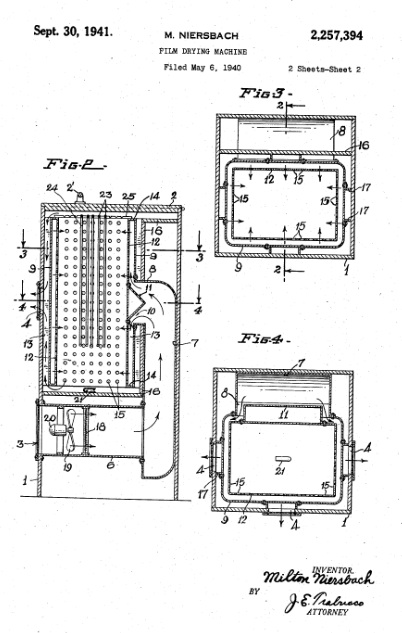
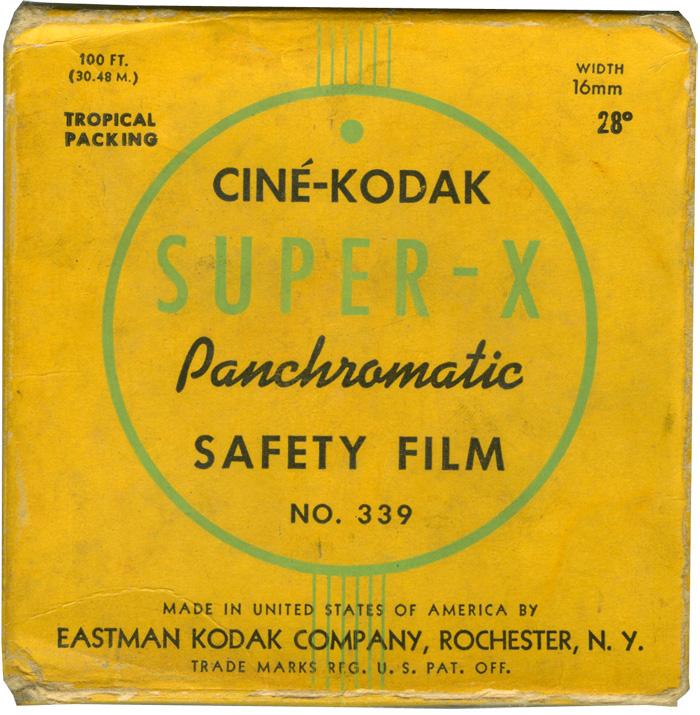
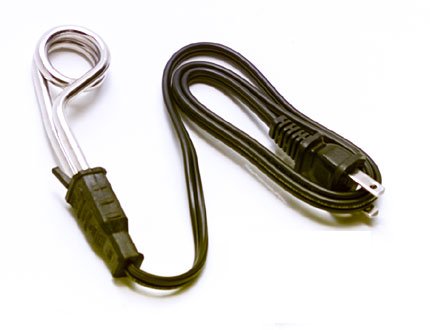
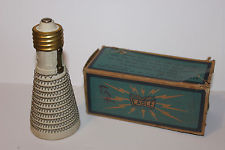
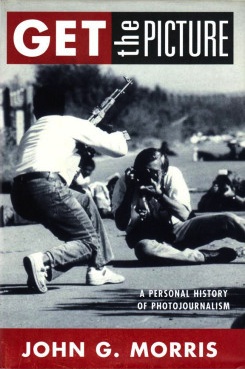
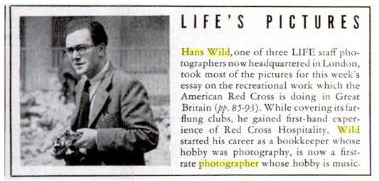
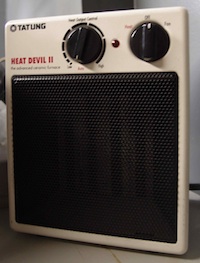

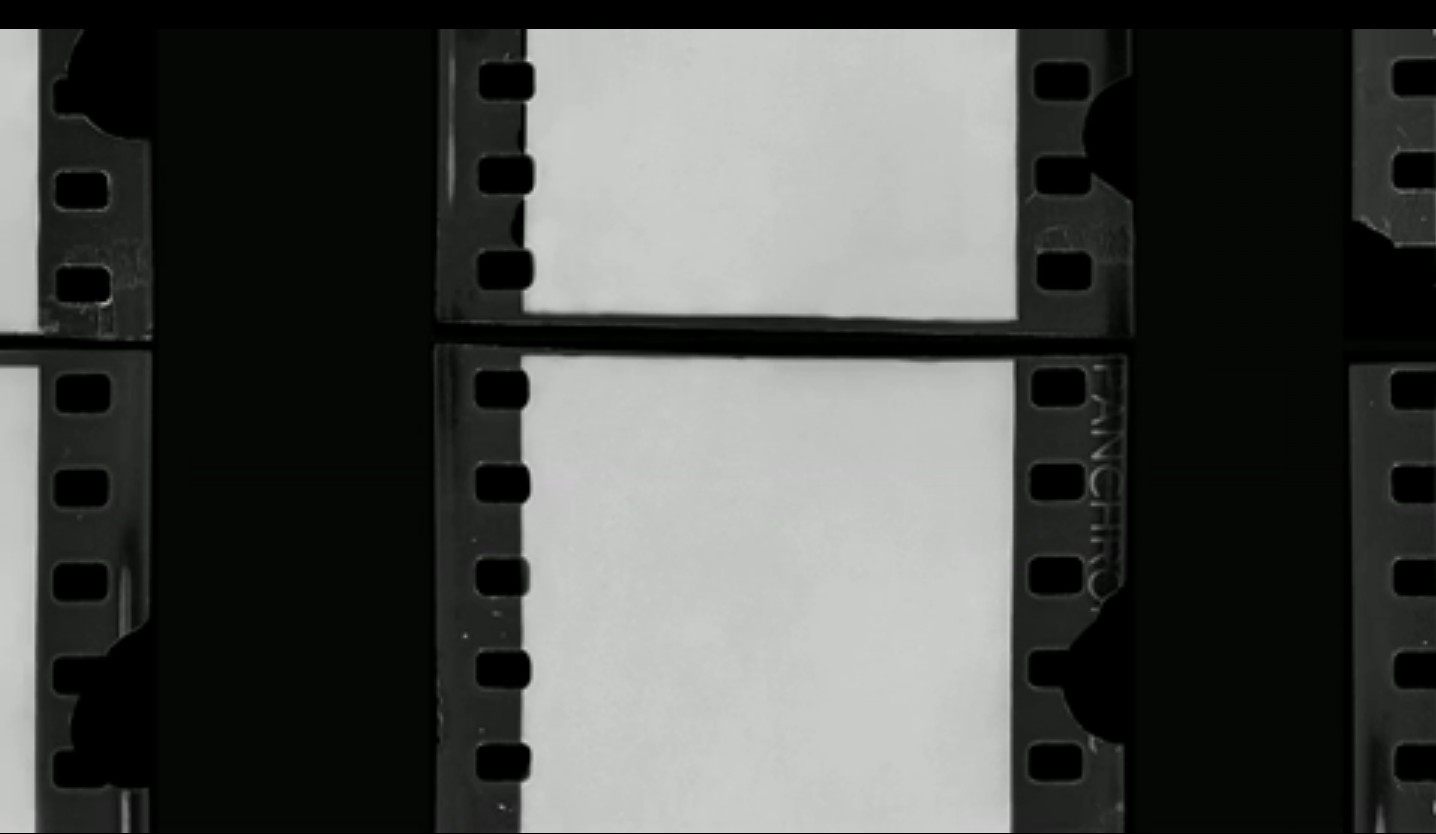
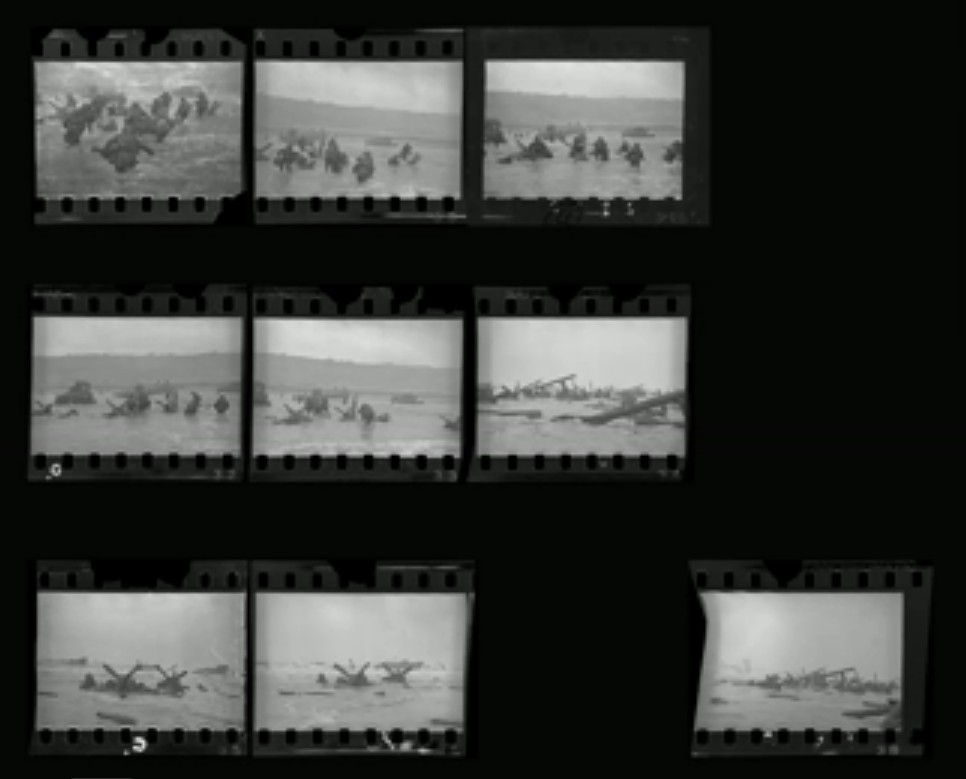




Hi, emulsions from the 1940s were not as robust as their counterparts from the 1990s. The gelatin used in the films then were much softer and were not tanned enough to withstand heat. Anything above 25ºC could be considered critical and can cause stripping or even melting, if the temps went higher. The recently discontinued Croatian film, “EFKE” can be considered as an example whose emulsion had much in common with emulsions made in the 1950s, including reactions to high temperatures. When we developed EFKE here in the tropics, using the usual tap water temps (28º-32ºC would be average) would cause this film’s emulsion to strip and lift off the film base. In one instance, I actually saw the emulsion wipe off when the film was squeegee’d, leaving only the clear film base. We would not use hot air driers for this film, though we could use the same for other films made by Kodak or Fuji.
By “tanned” do you mean hardened? Kodak’s Super XX — which I now agree was most likely the film used — included a hardener. Quite possibly the stop and fix used in LIFE‘s London darkroom also included hardeners.
This is actually the very first account we’ve heard (aside from Morris’s) of emulsion melt during that time period. Useful to learn that it did occur under certain conditions. However, it sounds as if the primary cause in the situations you describe involved processing above a certain temperature, rather than drying. Did you have instances where using a hot-air dryer caused the emulsion to run?